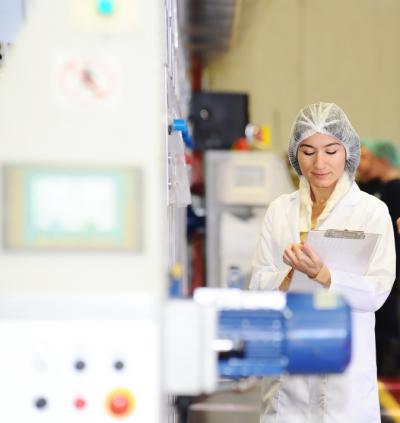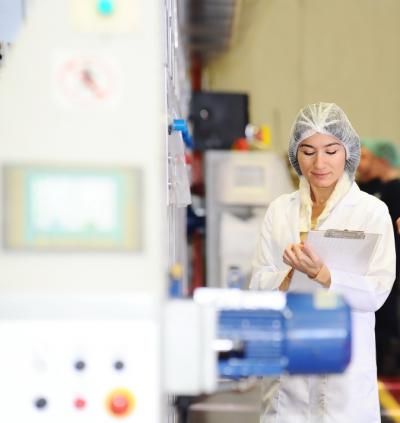June 5, 2014

June 5, 2014

 As a biopharmaceutical company matures and new products are added to its portfolio, expansion of its facilities, systems and Quality Control is a natural outcome. The growth in the Quality Control area most certainly is coupled not only with additional analysts and samples but with also the addition of new assays required for the proper validation and verification of the new and existing processes. Once those Quality Control assays and methods are initially validated there is very little impetus to revisit and improve them no matter how cumbersome, finicky and outdated they may be. The costs of not seeking to streamline is that Quality Control assays and methods retain long and tedious steps allowing for mistakes and wasted analyst time. Moreover, by persisting with outdated technology, the robustness of one’s result can be questioned. The application of a little sound science and some design of experiments may lead the Quality Control department of a biopharmaceutical manufacturing site to some definite gains in sample through-put and efficiency.
As a biopharmaceutical company matures and new products are added to its portfolio, expansion of its facilities, systems and Quality Control is a natural outcome. The growth in the Quality Control area most certainly is coupled not only with additional analysts and samples but with also the addition of new assays required for the proper validation and verification of the new and existing processes. Once those Quality Control assays and methods are initially validated there is very little impetus to revisit and improve them no matter how cumbersome, finicky and outdated they may be. The costs of not seeking to streamline is that Quality Control assays and methods retain long and tedious steps allowing for mistakes and wasted analyst time. Moreover, by persisting with outdated technology, the robustness of one’s result can be questioned. The application of a little sound science and some design of experiments may lead the Quality Control department of a biopharmaceutical manufacturing site to some definite gains in sample through-put and efficiency.
Certainly at first glance, a reasonable person can intuit that taking an old or out dated assay or method and improving it can be of great benefit to a Quality Control organization. Continuous improvement is an often heard mantra in today’s society, but what are some of the costs and pains associated with improvements to the old, tried and true Quality Control methods and assays? A few that immediately comes to mind are the required requalification and revalidation efforts, the re-filing of test methods with regulatory agencies, and quite simply finding the time and resources to dedicate to an effort that does not lead to immediate release of profitable product. The flip-side of that coin is the cost of not seeking to improve and streamline the old, cumbersome assays and methods. Those costs may include tying up a valuable resource for hours if not days to complete one test, utilizing larger volumes of harsher reagents, performing multiple small steps over and over, and precision and accuracy of the result may be leading to unnecessary rejection or reprocessing of batches or manufacturing intermediary steps. Undoubtedly, the investment in an experienced resource to study improvements and alternatives to an archaic assay or method will pay for itself in very short order. Simply having less steps will lead to both less time devoted to that assay or method as well as to fewer possibilities for mistakes. Mistakes cost not only reprocessing time but also the time required to investigate and document deviations and out-of-specification results. In conjunction to reduced errors, assay robustness may be improved.
The importance of assay and method ruggedness and robustness is often over-looked when a Quality Control organization is looking to quickly on-board a new product line. During stressful and ramp-up times the focus becomes qualifying or validating a method required to deliver an accurate and precise method. Granted that the accuracy and precision of a method are elements that need primary care, ruggedness and robustness of an assay or test method are also significant qualification and validation elements that will pay multiple dividends for the time invested in their careful exploration and documentation. According to the International Conference on Harmonization (ICH) the definition of analytical assay ruggedness is a measure of its capacity to remain unaffected by small but deliberate variations in method parameters and provides an indication of reliability during normal usage. Moreover, robustness can be defined as the ability of the analytical method to be reproduced in different laboratories or under different circumstances without the occurrence of unexpected differences in the obtained result(s). Shortcuts or "efficiencies" in the testing for ruggedness and robustness may only lead to inefficiencies longer term in use of the assay or method when new or inexperienced Quality Control analysts are required to run the assay or when laboratory moves cause perturbations in the old methods. Finding the edges of failure should be vigorously explored during assay development and then tested and documented just within those bounds during validation.
In order to facilitate proper assay or method streamlining while maintaining a rugged and robust assay, a set of experiments, based in sound science, designed in such a manner that will evaluate the chemical, physical and biological boundaries is fundamental. There are several software packages available that can be used to guide scientists identifying the most important factors and their ranges, locating the optimal factor combinations, and investigating the sensitivity of parameter changes to the critical assay attributes. Some software will even guide a user through parameter optimization on subsequent experiments. Software employed for this purpose will generate statistical tables and graphs to provide mathematical levels of confidence to the assay development process. But while statistical software does exist, it should not entirely replace the need to physically conduct boundary testing of chemical assays. Biological and microbiological assays pose a slightly more complex set of data interpretation due to their nature, but fundamental parameter analysis should be explored and documented in much the same way.
The benefits of assay and test method streamlining and optimization to a biopharmaceutical manufacturing Quality Control laboratory are often hard to justify once it is in a GMP state. But the "c" in cGMP cannot be ignored, and revisiting the ruggedness and robustness testing of an assay or method to address current technology and improved accuracy and precision can only make an organization stronger. The criticisms of such efforts are often short sighted and ignore the need to follow the FDA’s Process Validation Guidance, which clearly sets a Stage 3 expectation for Continued Process Verification. That verification will not only increase the number of samples a Quality Control Laboratory will receive it will also stress the chemical, physical and biological nature of the assay or method as well as those charged with running them on a routine basis.
Learn more about ProPharma's Process Validation services. Contact us to get in touch with Alfredo or one of our other subject matter experts for a customized presentation.

February 26, 2014
Your manufacturing equipment and processes have been established, qualified and validated; all you have to do now is rake in the profits right? Think again, the process of maintaining the validated...

November 24, 2014
Recently I was asked by a client whether they should continue to do Re-Qualifications or change to Continued Process Verification on their qualified cleaning circuits. To answer this, the factors to...